Imputing
Smartphone
Mobility Data
Imputing
Smartphone
Mobility Data
Solution Evolution
Future Technologies
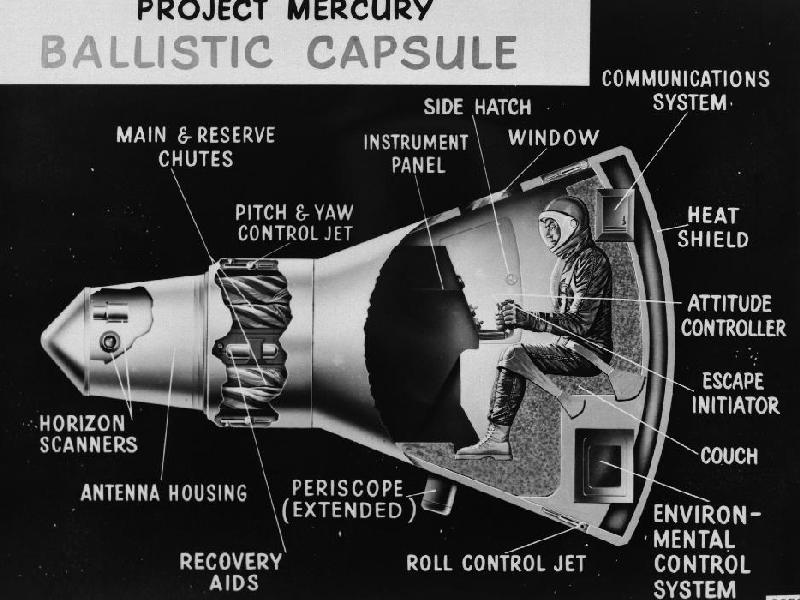
Windows and manual navigation controls were added to account for some situations
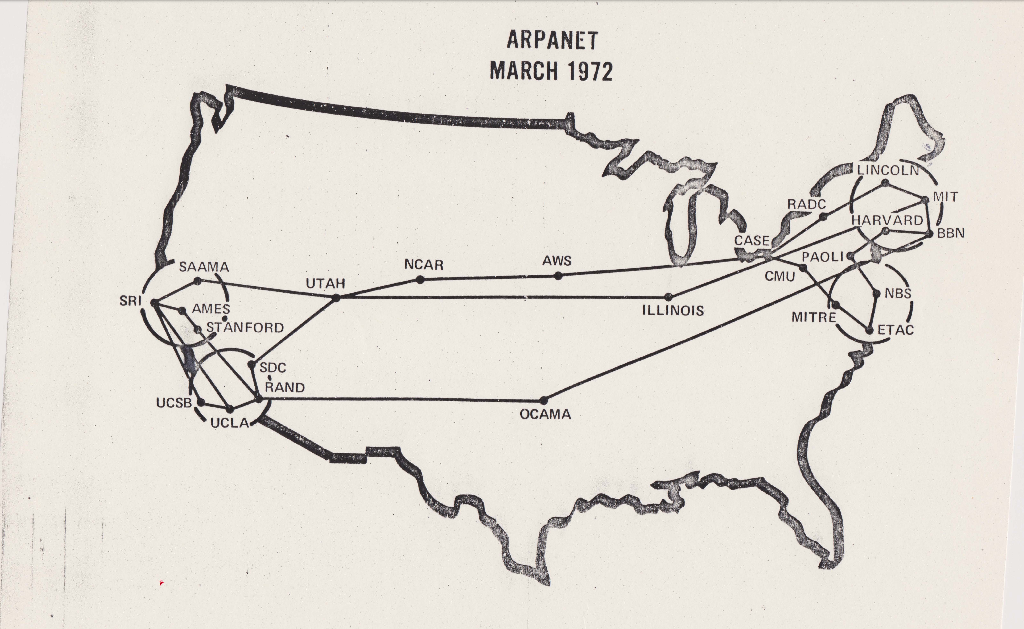
Dirty lines demanded development of packet-switching and error-checking mechanisms

Needed entirely new methodology for Next-Gen Sequencing
First Sequencer · Science Museum Group · CC
Arpanet 1972 Map · UCLA and BBN · CC
Travel Diary Studies were once future tech
That had unexpected problems
- Enormous burden1
That had unexpected problems
- Enormous burden1
- Poor data quality2
That had unexpected problems
- Enormous burden1
- Poor data quality2
- Wouldn’t validate against existing external sources3
The evolution of the solutions
took decades.
Current state of Travel Diary Studies
- Widespread usage globally
- Robust methodology
- One even forms the backbone of the Dutch national transportation model
Data from the app
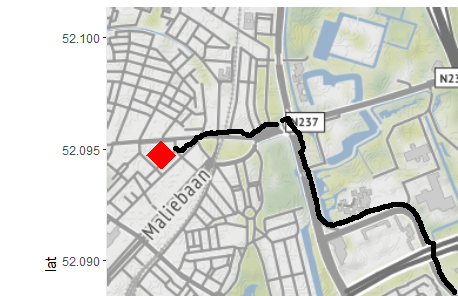
Data from the app 2
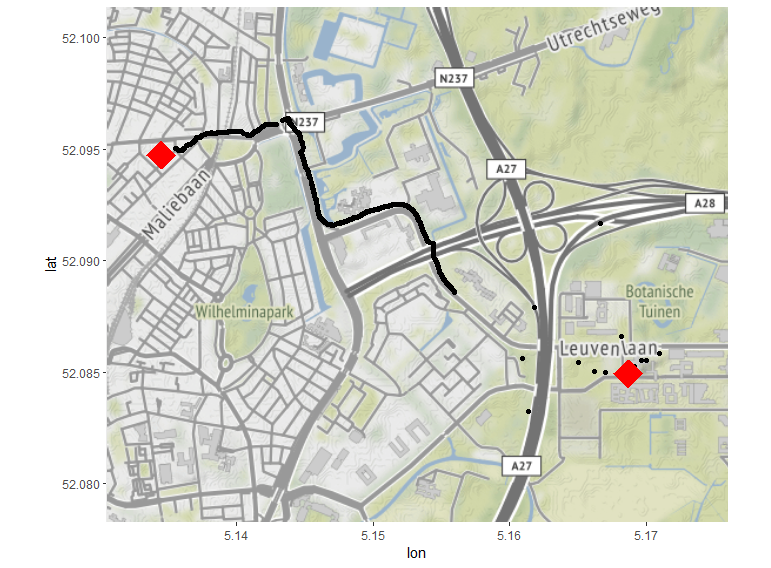
Data from the app 2

Data from the app
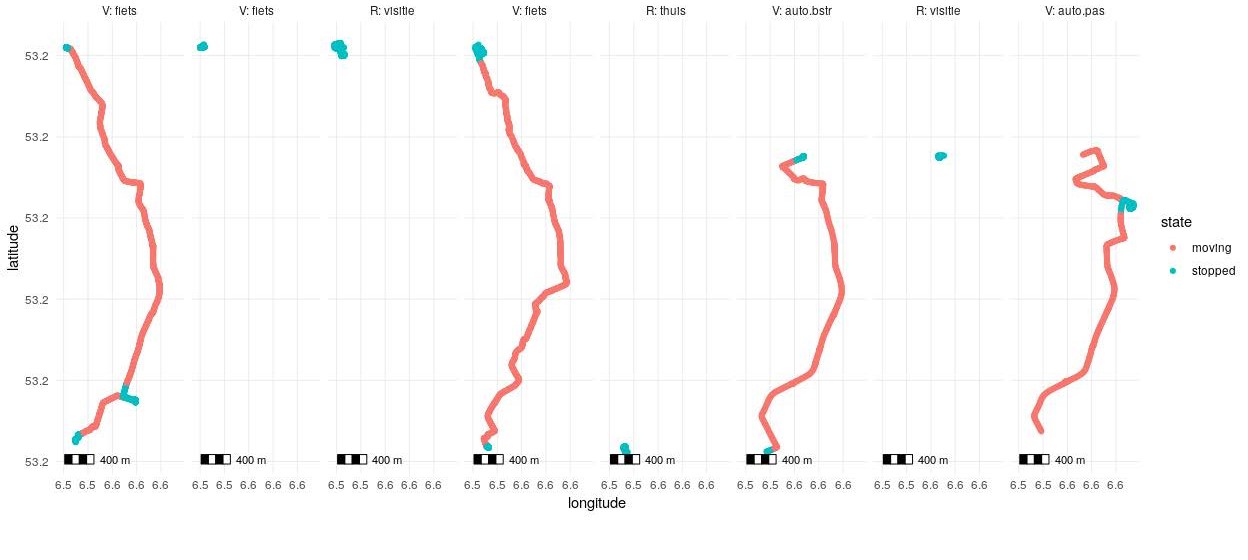
Missing data
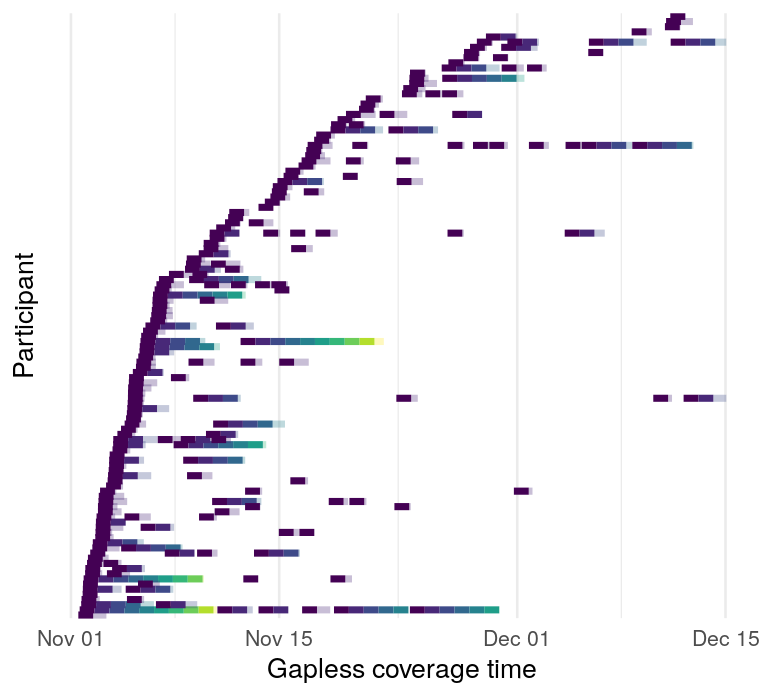
- Most people have missing data
- In 2018 data, Only 2 of 274 respondents had 7 contiguous days of complete data
- In 2022 data, similar issues
Gaps in the data
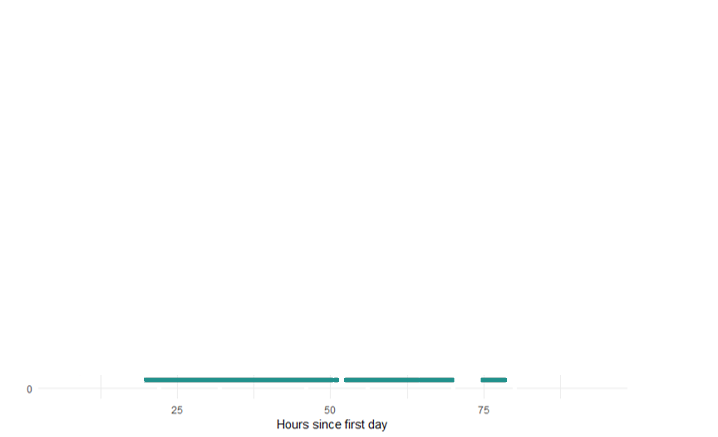
Gaps in the data
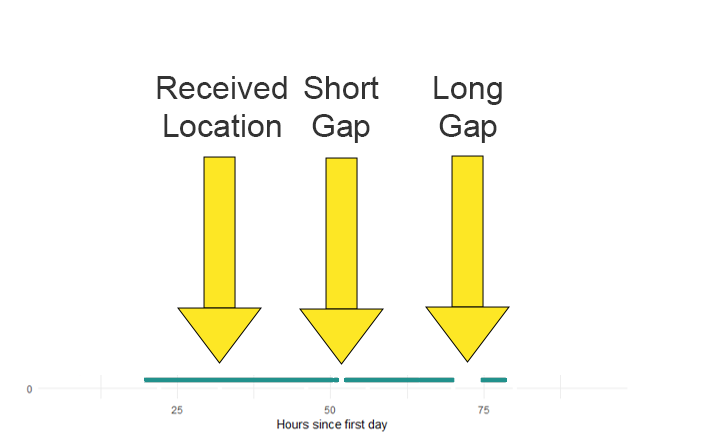
Short gap sensitivity:
| Min Removed/Hr | Travel Distance (km) | Stops |
|---|---|---|
| 1 | 0 (0%) | 0 (0%) |
| 2 | -0.1 (0%) | 0 (0%) |
| 3 | -0.2 (0%) | 0 (0%) |
| 4 | -0.3 (0%) | 0 (0%) |
| 5 | -0.4 (0%) | 0 (0%) |
| 10 | -1 (-4%) | 0 (0%) |
| 15 | -1.8 (-7.4%) | 0 (0%) |
| 20 | -2.9 (-10.8%) | 0 (0%) |
Long gaps
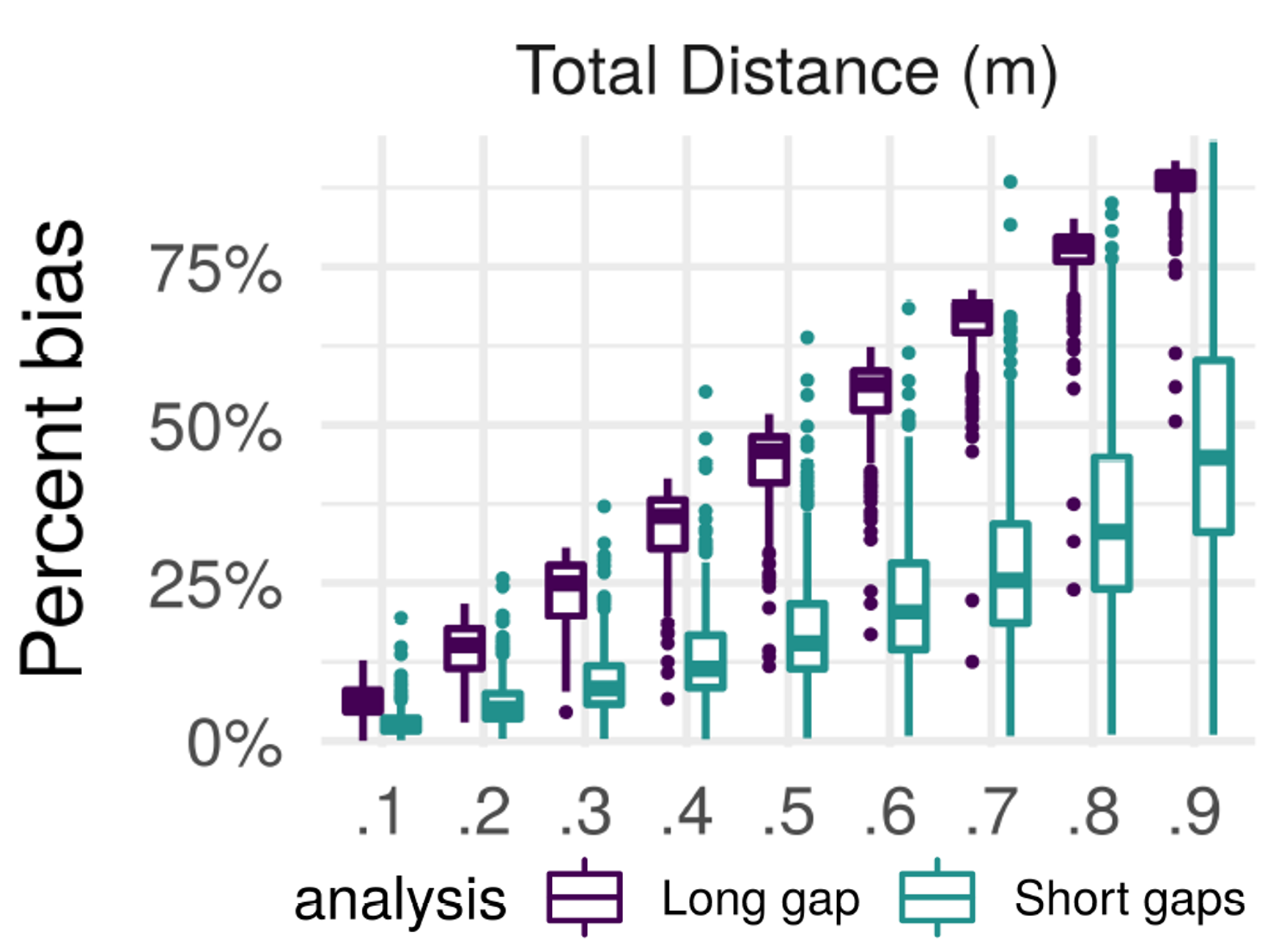
- Short gaps are mostly fine
- Long gaps not so much
Many long gaps
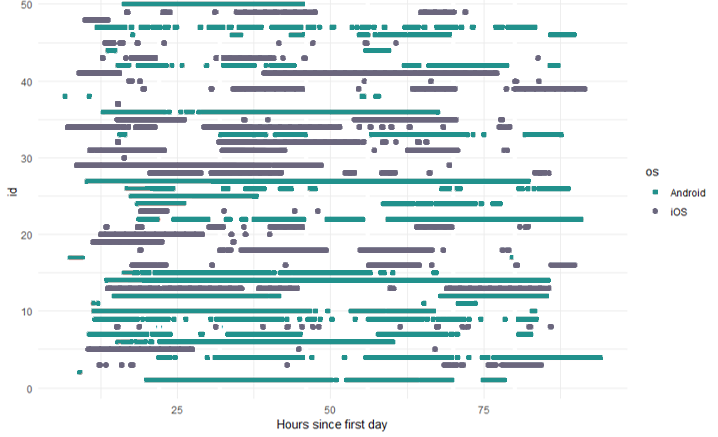
Long gaps at night
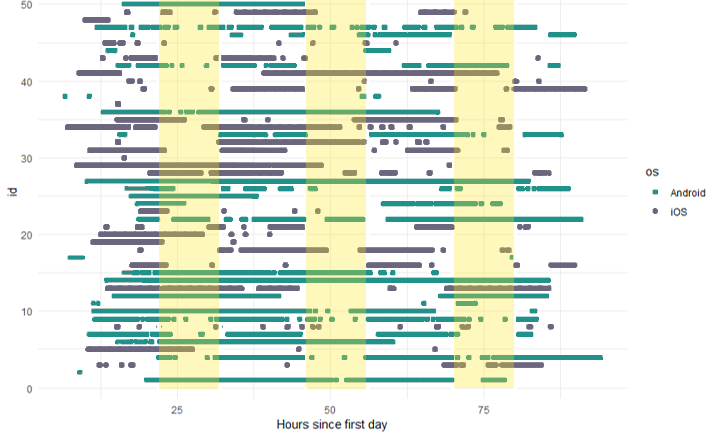
Imputing the data
The imputation procedure

A query is the trajectory with a gap
The imputation procedure
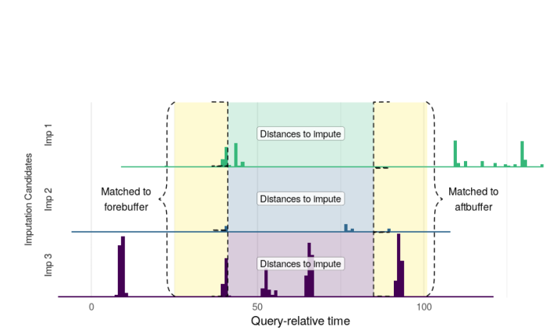
We need data to fill the gap from other (complete) trajectories
The imputation procedure

We calculate how similar trajectories are before and after the gap using Dynamic Time Warping
Dynamic Time Warping
What is Dynamic Time Warping
Dynamic Time Warping finds the path of best alignment between two series
What is Dynamic Time Warping
There are lots of ways to specify its parameters
Two variants
We selected a high-information and low-information variant to test on simulated data.
High-information specifies parameters that opt for closer matching to longer periods of data – optimal when there’s lots of overlapping data from individuals.
Low-information specifies parameters that are more lax and matches trajectories based on what occurred immediately before and after the gap.
Results
Results
- Performance over all conditions favors DTW methods
- Especially the low-information variant
Long gaps - One hour
| Method | Abs Bias | Med Bias | TP Acc |
|---|---|---|---|
| LI | 0.8Km | 0Km | 93.00% |
| MI | 0.9Km | 1.9Km | 93.00% |
| TWI | 1.4Km | 0.2Km | 89.30% |
| DTWBI | 0.5Km | 0Km | 95.00% |
| DTWBMI-HI | 1.4Km | 0Km | 94.10% |
| DTWBMI-LO | 0.7Km | 0Km | 95.70% |
Long gaps - Six hours
| Method | Abs Bias | Med Bias | TP Acc |
|---|---|---|---|
| LI | 5.4Km | −0.2Km | 92.90% |
| MI | 1.4Km | 11.5Km | 94.50% |
| TWI | 0.2Km | 3.3Km | 93.00% |
| DTWBI | 3.4Km | 0Km | 96.50% |
| DTWBMI-HI | 3.4Km | 0.1Km | 94.80% |
| DTWBMI-LO | 1.9Km | 0.1Km | 95.60% |
Long gaps - Twelve hours
| Method | Abs Bias | Med Bias | TP Acc |
|---|---|---|---|
| LI | 9.4Km | −1.9Km | 94.40% |
| MI | 10.9Km | 21.2Km | 95.20% |
| TWI | 9.3Km | 13Km | 93.80% |
| DTWBI | 0.1Km | −0.4Km | 95.90% |
| DTWBMI-HI | 4.5Km | 2.4Km | 94.30% |
| DTWBMI-LO | 0.2Km | 1.7Km | 96.00% |
Comparison with interpolation
| Gap Length | Method | Abs Bias | Med Bias |
|---|---|---|---|
| 1 hr | LI | 0.8Km | 0Km |
| 1 hr | DTWBMI-LO | 0.7Km | 0Km |
| 6 hrs | LI | 5.4Km | −0.2Km |
| 6 hrs | DTWBMI-LO | 1.9Km | 0.1Km |
| 12 hrs | LI | 9.4Km | −1.9Km |
| 12 hrs | DTWBMI-LO | 0.2Km | 1.7Km |
Recap
The missing data problem is a serious problem with data collected via a smartphone
(To be expected with future tech)
There’s no fantastic existing methodology to correct for it
Dynamic Time Warping-Based Multiple Imputation has some promise
Disappointingly, the high-information variant performs worse
Things that might help
More data per person
Including personal/trip variables in the imputation
References
WIN · 27 Sept 2023 · CBS Heerlen